Estoy mirando con optimismo el 2006 y quiero hacer llegar los mejores augurios para el año entrante, deseando que puedan festejar en familia con amor y paz estas fiestas.
Afectuosamente



Mariah Carey – All I Want For Christmas Is You
----------



 “And I ask myself why? Why were those cheap wines on Cyprus so good? I thought maybe one reason was that perhaps Cypriots would not drink them if they were not good, and maybe they only produce enough for domestic consumption and a small amount of export”…not my words but those of Michael Spice; do you ever find that someone has written exactly what you want to say! The point re ‘not knowing’ is summed up nicely by Antony Haggipavlu of the Olympus Oinoπoieio – that’s ‘winery’, in case you were wondering…;-)
“And I ask myself why? Why were those cheap wines on Cyprus so good? I thought maybe one reason was that perhaps Cypriots would not drink them if they were not good, and maybe they only produce enough for domestic consumption and a small amount of export”…not my words but those of Michael Spice; do you ever find that someone has written exactly what you want to say! The point re ‘not knowing’ is summed up nicely by Antony Haggipavlu of the Olympus Oinoπoieio – that’s ‘winery’, in case you were wondering…;-)![]()


The above image is, as before, borrowed from the erotic sketches and stories of
S.O. orgasms
Category:orgasm


Credit for picture must go here...Copyright © 2003 Santa Barbara Instrument Group.
I of course prefer the picture of the emerging moon below...except she's teasing me!!! Credit for which must go to that very naughty (I can talk!) Gavin Corder.

P.P.S. The slight technical hitch is now sorted (Wednesday 16th November...1:50pm): BIMBO has assisted the bimbo...but I'm leaving the nice (full) booty thatI used as a filler...oops, no! You know what Imean...
 Hmmmmmmmm...booty...
Hmmmmmmmm...booty...

(Superfluous happy smiley...and what a reason to be happy!)
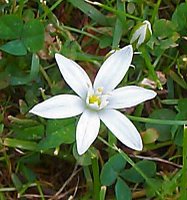

Book...banned; film...banned; TV series...banned...it must be brilliant!!!!! It's all available now and would enlighten you all...go read!
S.O.
P.S. Thanks to the nigh-on famous Gavin Corder for my new image...the O...pumping... and pumping ...oh dear...I've gone all faint again.
 ODE: Occasionally one ogles optical opulence, on observing our offered ornamental opus or orgy of outstandingly ornate, operatic orb.
ODE: Occasionally one ogles optical opulence, on observing our offered ornamental opus or orgy of outstandingly ornate, operatic orb.
Skin colour is not a good guide to quality: Some oranges are artificially coloured with a harmless vegetable dye, while others may show traces of green although they are ripe. Through a natural process called "re-greening," the skins of ripe oranges sometimes revert to green if there are blossoms on the tree at the same time as the fruit; this is because the tree produces chlorophyll to nourish the blossoms, and some of the pigment may be taken up by the mature fruit. Oranges that have "re-greened" may actually be sweeter because they are extra-ripe.
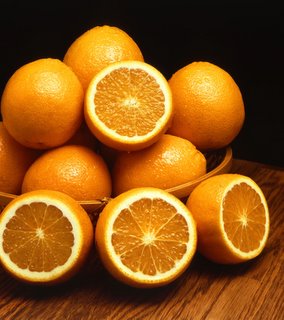 Don’t get me wrong…I started this because I like oranges and nutrition(and the word begins with an ‘O’...gulp) , I thought a picture of oranges would look good on my blog (I think it does) and apparently some film directors like the look of oranges on the set, I liked this…oh God…Father.
Don’t get me wrong…I started this because I like oranges and nutrition(and the word begins with an ‘O’...gulp) , I thought a picture of oranges would look good on my blog (I think it does) and apparently some film directors like the look of oranges on the set, I liked this…oh God…Father.
 ...and even if any guys out there don't like the taste just look what thy can do for you...and I heard small ones are more juicy!
...and even if any guys out there don't like the taste just look what thy can do for you...and I heard small ones are more juicy!
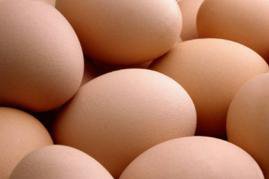 Today, if we eat eggs at all, we almost always eat hens’ eggs, though the eggs of other fowl - including duck, goose and quail - are getting popular again.
Today, if we eat eggs at all, we almost always eat hens’ eggs, though the eggs of other fowl - including duck, goose and quail - are getting popular again. 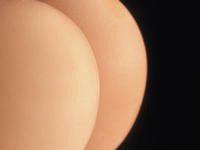

 That’s got your interest…more below after some discussion; the image is called 'Gardening' from Marjorie Baldwin Greene...which helps explain part of what I'm getting at below.
That’s got your interest…more below after some discussion; the image is called 'Gardening' from Marjorie Baldwin Greene...which helps explain part of what I'm getting at below.
 Follow the link...read the rest... excuse me while I go to the little boys room...
Follow the link...read the rest... excuse me while I go to the little boys room...
 To find out more about the olive plant, different cultivars and the methods of their cultivation go HERE or for an easy to read and fairly informative background into all things olive go HERE.
To find out more about the olive plant, different cultivars and the methods of their cultivation go HERE or for an easy to read and fairly informative background into all things olive go HERE. 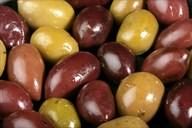 When shopping try to be selective, as always you pay for what you get so if the olive oil you want is 'surprisingly' cheap...well, enough said; always choose cold-pressed unrefined nut or seed oils or extra-virgin olive oil, this way you know that it has not undergone undue processes or chemical treatments, also if you can get it in dark glass all the better… I’m serious, read this “Find an extra virgin olive oil that is cold pressed, unfiltered, and looks cloudy. The oil should be packaged in dark glass bottles to protect it from the damaging effects of light. Real olive oil is still made in small estate bottled settings.”…then read more HERE.
When shopping try to be selective, as always you pay for what you get so if the olive oil you want is 'surprisingly' cheap...well, enough said; always choose cold-pressed unrefined nut or seed oils or extra-virgin olive oil, this way you know that it has not undergone undue processes or chemical treatments, also if you can get it in dark glass all the better… I’m serious, read this “Find an extra virgin olive oil that is cold pressed, unfiltered, and looks cloudy. The oil should be packaged in dark glass bottles to protect it from the damaging effects of light. Real olive oil is still made in small estate bottled settings.”…then read more HERE. 
"According to a study from an English university the order in which you write the letters of a word does not matter: as long as the first and last letter are written in the correct positions the rest can be totally wrong and you will still be able to read the message with no problem at all. The reason for this is because we do not read each letter individually but the word as a whole. Personally I find this incredible..."
S.O.
 After popular and incessant demand from my many readers (ahem) I have decided to post a picture of my beloved children, taken in the garden at home in the UK this summer.
After popular and incessant demand from my many readers (ahem) I have decided to post a picture of my beloved children, taken in the garden at home in the UK this summer. Horses are classified as non-ruminant herbivores; they are ‘browsing’ grazers and normally would spend a lot of time each day feeding on a little-and-often basis. This forage diet offers plenty of fibre which, together with the simple sugars from the digested forage provides an adequate energy intake. A variety of pasture and plants/ herbs consumed can largely satisfy a horse’s need for vitamins and minerals.
Horses are classified as non-ruminant herbivores; they are ‘browsing’ grazers and normally would spend a lot of time each day feeding on a little-and-often basis. This forage diet offers plenty of fibre which, together with the simple sugars from the digested forage provides an adequate energy intake. A variety of pasture and plants/ herbs consumed can largely satisfy a horse’s need for vitamins and minerals. S.O.